Can Manga and Anime Contribute to Feminism and Gender Studies?
In 2014, Laura Pope Robbins published Bringing Anime to Academic Libraries. The purpose of the article was to provide a decisive argument as to why experiencing anime can be beneficial within the setting of academia. The basis of Robbins’ argument for exposing students to manga and anime was so that they might better understand certain aspects of Japanese culture specifically. However, her argument can be expanded to incorporate a variety of themes present in popular manga and anime series which could be beneficial within various academic discourses. This article will focus on in what ways popular series may serve a pivotal role in the discourse of gender studies and feminist philosophy.

While there are countless genres of manga and anime that are able to contribute to academic discourse, the genres that will be the focus here are mahō shōjo, or Magical Girl anime, and anime series featuring “gender-bender” elements. The themes present within these particular genres could prove useful in furthering present discussions concerning gender and sexuality. Additionally, because manga or anime can be argued as being much more accessible than a dense academic paper, particularly for those just starting to learn about such topics, a move to include manga and anime both in feminist or gender studies-based curriculums as well as source material for higher level academic scholarship could prove useful. This article will examine these particular genres of manga and anime situated within both feminist and Gender Women’s and Sexuality Studies (GWSS) context in order to parse out in what ways the inclusion of manga and anime can both contribute and detract from the present academic conversations.
The Magical Girl: Feminist Transcendence or a Reinforcement of Gender Norms?
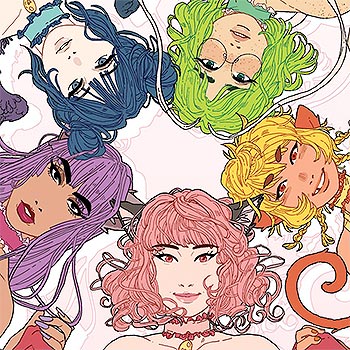
Magical Girl anime (mahō shōjo) is a genre of anime which is marketed toward young girls between the ages of 4 and 9. Well-known series contained in this genre include Sailor Moon, Mermaid Melody Pichi Pichi Pitch, Cardcaptor Sakura, Tokyo Mew Mew, and Shugo Chara. Magical Girl anime typically centers around a young female hero, usually around middle school age, who is abruptly thrown into fantastic adventures following her sudden development of magical power. Fans follow the young heroine as she protects her friends, family, and the world from evil forces using her newfound powers. As such, this genre at first positions itself in clear opposition to traditional gender norms which claim that women are not as strong or determined as men, and should instead focus on being good daughters, wives, and mothers.
Scholar Susan Napier notes that:
“popular youth-oriented anime series such as the 1980s Cutey Honey and the 1990s Sailor Moon show images of powerful young women (albeit highly sexualized in the case of Cutey Honey) that anticipate genuine, although small, changes in women’s empowerment over the last two decades and certainly suggest alternatives to the notion of Japanese women as passive and domesticated.”
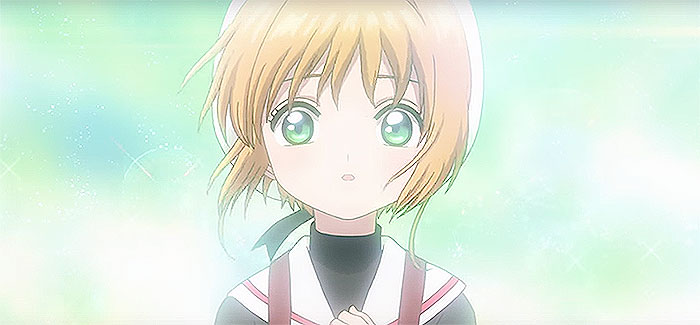
This statement is certainly not misplaced, as most of the more popular shōnen anime, which are geared toward young men, tend to focus on the development of the young male protagonist. The female characters in these shows typically fall far behind their male counterparts in strength and determination. All too often their only important role is to uplift and support the male character through his struggles, such is the case with Sakura and Hinata in Naruto, or Rukia and Orihime in Bleach. It is certainly the case that these four specific women in many ways come into their own during the course of each series, but admitting that they never become as strong or as independent as their male counterparts in the series is unavoidable.
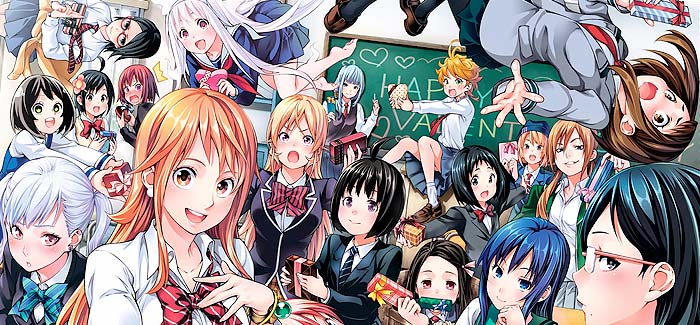
Most typical examples of mahō shōjo contain several basic tropes: a young female character, supernatural powers, and the quintessential transformation sequence that turns the “normal girl” into a warrior for peace and justice. The transformation sequence, framed within the context of feminist thought and GWS, is a crucial point of focus here. This transcendental moment is when the young girl ceases to be the “average girl,” the girl who is constantly being molded by society to be the embodiment of her ascribed gender role, and suddenly becomes its antithesis. Scholars Susan Napier and Kotani Mari claim that “identity transformation, a common device that changes the female protagonist from a mediocre girl to a cute warrior, [is] an identity transcendence that undermines fixed traditional gender roles.” In many ways, this statement is true. The traditional role of women in society is to be weak and obedient; a superhuman young woman is obviously opposed to these traditional gender norms.

Sadly, for many such anime, the insidious presence of gender norms persists. Scholar Kumiko Saito rightly points out that arguments like Mari and Napier’s, while appealing, encounter problems with their initial premise. Saito claims that such arguments encounter difficulty in “[hypothesizing] such reflexive connections between women’s gender roles and the popularity of fighting female heroes.” For Saito, this difficulty emerges from the fact that mahō shōjo is in actuality most interested in marketing products to young children. Many classic female heroes present within the Magical Girl franchise accomplish their tasks through the use of magical accessories including wands, staffs, or magical animal counterparts. All of these can be and are later marketed as a product that fans of the show will buy, and Saito cites the deficit that companies encounter per each animated episode that they produce as the main reason as to why their true goal is marketing products to their adolescent fanbase.
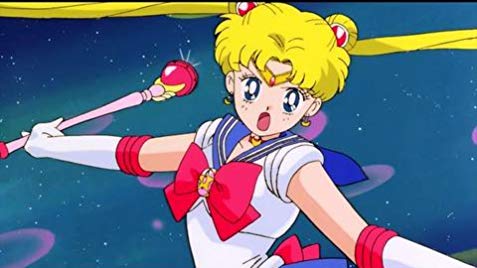
It is due to this fixation on marketing that scholar Anne Allison, speaking on Sailor Moon, notes that the “battle heroine” is, in actuality, a “self-indulgent pursuer of fantasies and dreams through consumption of merchandise.” The process of the heroine’s transformation is, for many critics, actually more of a makeover than a power-up; this inclination is displayed most obviously in Sailor Moon, as the Sailor Scouts must literally shout “Make-Up!” in order to initiate their transformation sequence. A similar spirit may be observed in Cardcaptor Sakura, as every time Sakura goes out to hunt down Clow Cards she must first change into a new outfit, each one made for her by her best friend and somewhat-sidekick, Tomoyo. Due to this tendency of mahō shōjo anime to rely heavily on feminine, sexualized aesthetics when carrying out their character building, scholar Saito Minako claims that such programs actually work to reinforce fixed gender roles in society.
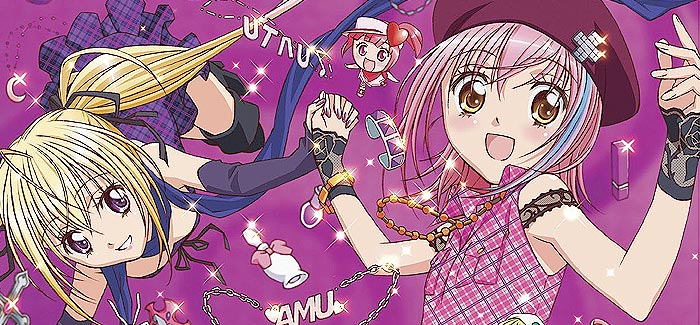
The heroine’s reliance on looking pretty or depending on a variety of kitschy gadgets in order to carry out her world-saving duties, Minako argues, teaches girls to become good daughters and workers. Hence, most traditional mahō shōjo protagonists in fact reinforce traditional values of femininity, even buttressing the importance of marriage and domestic life in the minds of young girls. You can see this inclination distinctly in shows like the ones already mentioned here, where the female protagonist slowly comes to rely on a male counterpart––for example, Usagi’s growing reliance on Mamoru, Sakura’s slow-budding love for Syaoran, or Amu’s (at first unwilling) attachment to Ikuto.
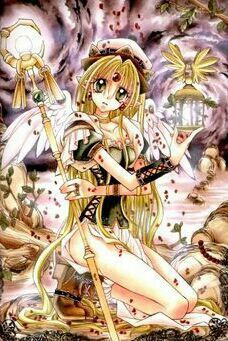
This male magical counterpart is almost always presented, at first, as mysterious, aloof, and even sometimes as opposed to the female protagonist as was the case with Amu and Ikuto. This opposition would superficially seem to illustrate mahō shōjo’s rejection of traditional gender roles such as marriage and domesticity. However, each of these show’s female warriors eventually fall in love with the male counterpart and come to rely on him for both moral and physical support during combat and in everyday life. Reinforcing this argument, the female “bad guys” in many such series––Black Lady in Sailor Moon or Finn Fish in Kamikaze Kaitō Jeanne, for example––wear heavy makeup and possess a focus on careerism; the female villains in mahō shōjo come to represent those women who failed to be wives and mothers. Fortifying this point in the most literal sense is Finn Fish, an angel who has been stolen away from god by the devil.
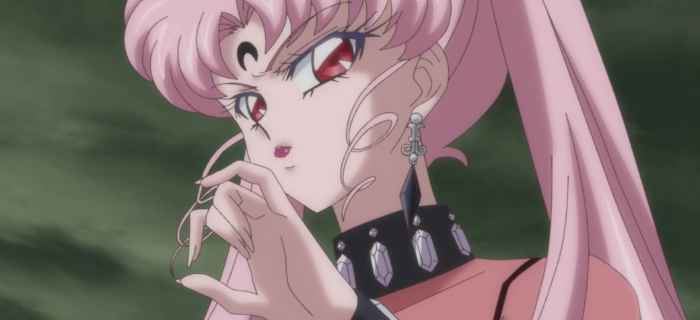
Saito Tamaki proposes that anime and manga are produced and consumed within an imagined, autonomous world of representations that are detached from recognized reality. Hence, it can be argued that the implementation of manga or anime into an educational setting would not be productive at all, as it is not viewed as being connected to reality in the same way as other educational tools. Scholars argue that much of the current fanbase for mahō shōjo, which is suspiciously not only marketed to young girls but also men between 19 and 30, demands that consumers become indifferent to reality. Instead, the industry focuses on character fetishism in a “self-enclosed economy of desire.”

Throughout many of these series, in spite of being geared toward young women and presenting themes that may initially compel one to view it as feminist rhetoric, the theme of men being stronger than women is still pervasive. Unfortunately, such shows prop up the present status quo by subtly suggesting that any woman, her strength and independence aside, desires someone to be protected by. According to Kumiko Saito, this desire is further solidified through the heroine’s ability to “covertly [teach] girls to pursue fashion, romance, and consumption until marriage and, once married, to stay at home as a good wife and mother.”
Gender, Sexuality, & Fantasy: Gender-Bender Manga and Anime
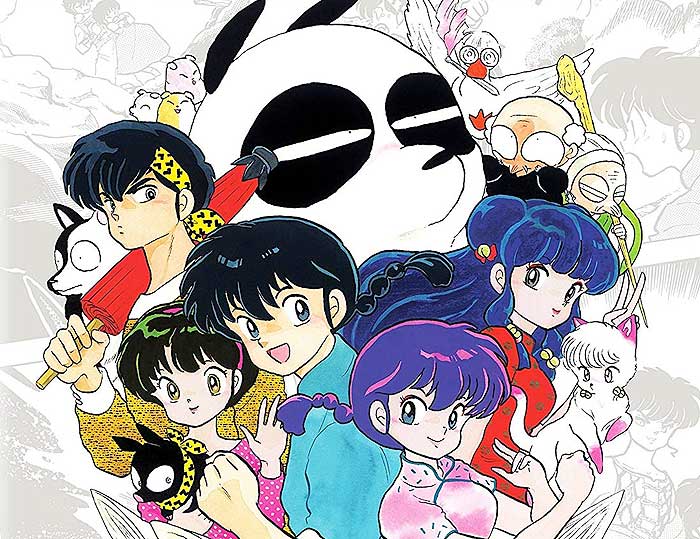
Gloria Jean Watkins, better known by her pen name bell hooks, famously claimed:
“The first act of violence [the] patriarchy demands of males is not violence toward women. Instead, patriarchy demands of all males that they engage in acts of psychic self-mutilation, that they kill off the emotional parts of themselves. If an individual is not successful in emotionally crippling himself, he can count on patriarchal men to enact rituals of power that will assault his self-esteem.”
This struggle of self-mutilation comes to the fore most notably in the manga and anime genre known as “gender-bender.” The gender-bender genre, encompassing a variety of other themes such as romance and comedy, is known for its focus on upsetting traditional gender and sexual norms. In many of the more popular series encompassed within this genre, this destabilizing of norms is accomplished through a variety of mediums including the switching of souls or minds as seen in Your Name, a magical curse that plays with the main character’s established gender as in Ranma 1/2, or through cross-dressing like in Ouran High School Host Club or Revolutionary Girl Utena.

While mahō shōjo certainly offers interesting perspectives on feminist issues in spite of its pitfalls, it is important to remember that Magical Girl anime is also marketed to young men. Hence, the young men that are catered to by anime networks are encouraged to support these young female characters who embody the very traits that, as bell hooks pointed out, these young men are told that they must eradicate. Similarly, gender-bender manga and anime reveal the unstable ground upon which traditional notions of gender and sexuality rest by focussing on characters whose gender and sexuality are fluid. In the case of Ranma 1/2, which began its original run in 1987, the protagonist Ranma Saotome, according to Susan Napier, represents Judith Butler’s theory of “the norm that chooses us” because his gender fluidity is out of his control due to a curse concerning a spring that he fell in while martial arts training.

Ranma’s situation is one that would likely resonate with present day gender issues: Ranma’s often public displays of crossing gender boundaries causes great confusion for those around him because “they are uncomfortably aware of a threatening destabilization of social boundaries without necessarily understanding the reasons for their own discomfort.” Ranma 1/2′s ability to continually transgress social boundaries certainly positions it as material that can readily contribute to academic conversations concerning sexuality and gender. However, if one were to wonder whether or not a show like Ranma would be able to help people become more open and accepting towards transgender individuals, they would likely be let down. Napier goes on to say that “[w]hile boundaries are crossed and re-crossed to often riotous effect, the inevitably more conservative format of a weekly television series ultimately leads to a conservative resolution in which, at the end of each episode, the boundaries are reinscribed into the conventions of heterosexual hierarchical society.”

Ouran High School Host Club (OHSHC) is yet another seminal gender-bender series. Beginning in 2002, OHSHC follows Haruhi Fujioka, who attends an elite high school on a merit scholarship. Following the breaking of an expensive vase by mistake, Haruhi is enlisted in the schools host club so that they might pay back the club for the price of the vase. Haruhi presents themselves as mostly androgynous, and in the original Japanese version typically uses neutral pronouns when speaking about themselves. While Haruhi does not display much care concerning how others perceive or address them, most of the supporting characters, particularly those who work at the host club with them, perceive and treat Haruhi as a girl. Throughout much of the series Haruhi encounters harassment from her fellow host club workers, and much of this harassment centers around them insisting that Haruhi act, dress, and generally present more feminine.
There are several situations which arise throughout the series where Haruhi is reprimanded by their coworkers. The scoldings from their coworkers almost always are concerned with Haruhi’s androgynous presentation, typically ending with Haruhi being told that they must always remember they are in fact a girl, and therefore are weaker. Hence, Haruhi should not put themselves into situations that, according to the host club members, only men can handle. At one point a fellow host club member even pretends that he is going to rape Haruhi merely to drive home the point that, at the end of the day, Haruhi is helpless and defenseless because they are a girl. Thus, in spite of OHSHC’s focus on an androgynous main character, which can and does upset gender norms, both the manga and the anime ultimately work to reinforce heteronormativity and the patriarchy.
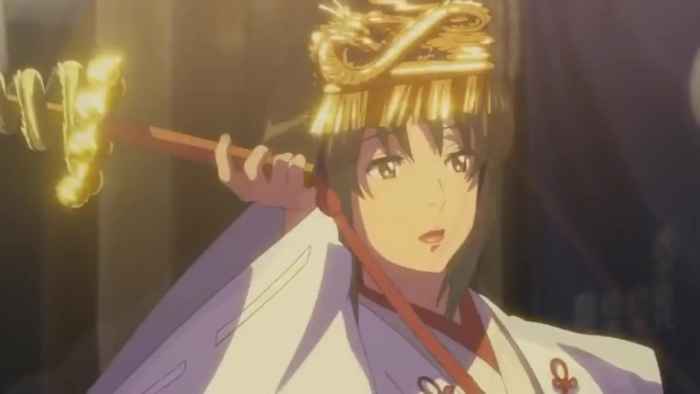
Perhaps one of the few gender-bender anime out there that presents such issues in a positive, or at the very least neutral, light is the 2017 animated film Your Name. The film follows Mitsuha Miyamizu, a young Shinto shrine maiden, and Taki Tachibana, a high school boy living in Tokyo. Mitsuha’s father is the mayor of their small town Itomori, leaving both Mitsuha and her younger sister in the care of their grandmother who teaches them the importance of Shinto traditions. Mitsuha, however, longs for a life in the big city, and she gets her wish when one morning she wakes up in the body of Taki, while Taki wakes up in her body. While the film does not follow too carefully what Taki does while in Mitsuha’s body, save for a few breast-related incidents, the film does seem very interested in Mitsuha’s antics whilst she inhabits the body of Taki. Mitsuha even goes so far as to ask Taki’s manager at his part time job, a woman, out on a date. Mitsuha seems extremely disappointed when she realizes that she will not be in Taki’s body to go on a date with her.
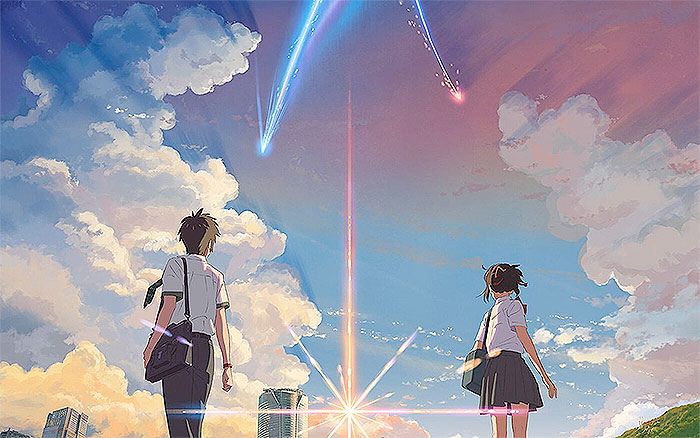
Mitsuha’s disappointment upon this realization indicates that Mitsuha’s sexuality might be more fluid than she lets on, and is reinforced by her declaration toward the beginning of the film that she desires nothing more than to be a cute boy living in the big city. Mitsuha’s sexual, and perhaps gender, fluidity is not the focus of the film. However, the film’s ability to capture Mitsuha’s sexual curiosity as well as gender fluid leanings in a manner that is not problematic, but is instead a normal and accepted part of Mitsuha’s personal identity, places it far ahead of other gender-bender series. The rest of the film focuses on Mitsuha’s plans to save the citizens of Itomori from an impending commit, and while Taki and Mitsuha share several romantically charged moments together before the commit is set to destroy Itomori, Mitsuha does not rely on Taki for help. Instead, the film focuses on Mitsuha’s own will and determination in the face of impending doom, accentuating her own personal autonomy in spite of the ascribed norms of her gender and the implications of her gender in both the small rural town of Itomori as well as in relation to her role as a shrine maiden.
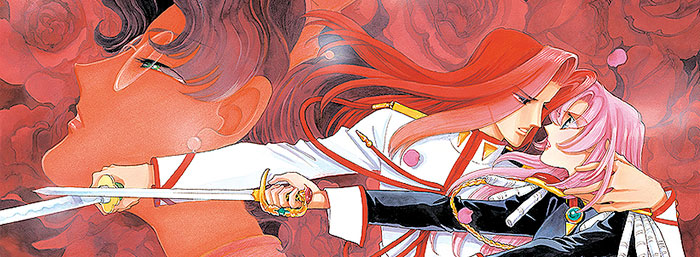
In short, both mahō shōjo and gender-bender series can and do offer up an astounding array of themes that can prove useful within academia. In spite of the various pitfalls of each genre, there are still many aspects of any manga or anime which should, and have, been explored or critiqued through an academic lens. Gender Women’s and Sexuality Studies as well as feminist philosophy would certainly not be worse off were they to make the decision to take manga and anime more seriously and incorporate it more within present day discourse. However, if one was hoping that either of these genres could help in making society more open to new ideas of gender and sexuality, they would likely come to find that this is not the case as many of the series mentioned here, at the end of the day, only serve to prop up heteronormativity and the patriarchal agenda.
What do you think? Leave a comment.




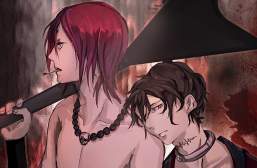
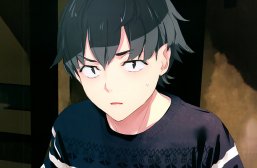

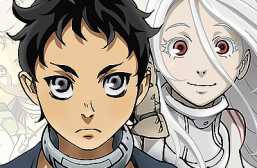
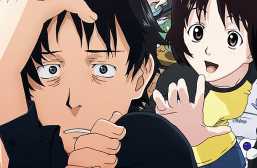
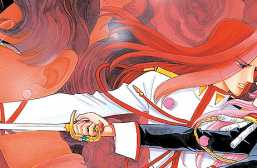
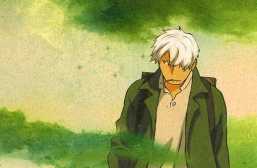
This was a very thorough and well-written article; I really enjoyed reading it! Your thoughts on gender fluidity in anime and manga are really intriguing, and I especially liked your insight on mahō shōjo and feminist issues.
Interesting perspective. Reminds me of a quote by American curators Carole Kismaric and Marvin Heiferman who believe that mystery novels can inspire young girls to achieve higher in life through fictional character that alway prevail through wisdom and determination. I quote:
“Nancy Drew bears a special responsibility: she stakes out new territory by showing girls how to take action, how to set their sights beyond what convention expects of them. Nancy was, and remains, an original in kids’ literature; she still teaches girls that it’s OK to be smarter than anyone else around, that success is the appropriate reward for being an independent, curious risk-taker who knows when to persevere and when to ask for help. Nancy, always open to life’s mysteries, invites her readers to seek nothing less for themselves.”
I love “Simoun” which is set in a society in where everyone is born female, and people choose their physical sex as they finish puberty; the main characters are pilot-priestesses who can only continue doing their jobs so long as they delay the decision.
A major influence on Utena is Rose of Versailles, an older story about a woman raised as a man and working as a military officer in pre-revolutionary France.
There’s very few animes I can come up with where women are actually stronger than the men while not being overly sexualized. Granted, I’ve mostly watched anime aimed at men as those seems more popular (and numerous?), but the few Shoujo animes I’ve watched still had a decent amount traits seperating men and women, even if it seems a lot better than the avarage anime.
I mostly based this on that I noticed that they often say things such as “as a man I have to do x, this is being a man” etc. Granted they also sometimes make this into a joke, which weights it up a little.
Oh boy, I’ve had a rant brewing for like a month because a friend is trying to get me to go to an anime convention and I’ve been having to explain why I can’t deal with anime anymore. Get a drink and a snack, you’ll need it for this wall of text.
I’ve watched anime on and off for about 15 years, even since Toonami and Gundam Wing became a thing. After all these years, I honestly find nothing positive to say about anime. The best possible thing I’m able to say about an anime is, “It isn’t the worst.” I can think of exactly one anime off the top of my head (FLCL, with MAYBE an honorable mention going to Beck, but its been a while since I watched that so I don’t remember exactly) that I wouldn’t be embarrassed to show to my feminist friends. Even the high points of anime like Cowboy Bebop STILL put characters in fan service driven sex doll outfits for no reason. In two separate shows I’ve seen, the main character pull a weapon on a guy because he’s gay. Meanwhile Ghost in the Shell’s manga has a two page COLOR spread (in a black and white manga) of the Lieutenant having a lesbian threesome. When the LEAST offensive part of anime manages to be that almost all men are portrayed as lunatic sex driven maniacs, it says something. I guess if you’re really digging, I’ll give you that crying is generally considered more acceptable in some circumstances? But generally anime will have at least one hypermasculine stereotype that’s supposed to be the golden standard of “man” that the main character just happens to be failing to live up to. Crying isn’t being portrayed as “OK” but as a sign of the main character’s failure. IF a strong female character is introduced you might as well put a countdown in the corner for how long until she needs to be rescued by the main (male) character or ends up dating said (male) character. Back to Ghost in the Shell, its continuously implied about the strong female lead that she might actually have used to be a male and just prefers a big breasted scantily clad cyborg body because reasons. These portrayals of women don’t exist in a vacuum and are mirrored by anime’s treatment of men. We’re big, dumb, and don’t take a hint. Women are confusing and men are too thick to figure it out. And god forbid we accidentally see some skin or we’ll instantly break out in an overexagerated sweat and blush, because we don’t have any self control! God know how anything excites anime characters anymore anyway, considering every woman in their world dresses like a bad BDSM act.
The relationships portrayed are just as unhealthy. The whole concept of “moe” has come to rest somewhere between unhealthy obsession and outright pedophilia – with men being the target audience. This idea that we as men can’t accept any girl unless she’s pure, virginal, and meek creates insane ideas of relationships that are clearly mirrored in its fans. I once saw a video where an anime fan went on and on extolling the virtues of his fake anime girlfriend because she was….well, exactly that. Meek, virginal, and pure. She didn’t bother him or want him to do things. She didn’t have emotions that he had to empathize with. She didn’t have any desires other than to sit and be cute. The whole message of anime seems to be that this is what men want. Even when strong female characters are given, the second they’re in a romantic situation they become subservient sex dolls because it turns out that’s all they really wanted the whole time! This happens in western culture as well and in both the message is absolutely infuriating to me. Why can’t we portray healthy real relationships? Why can’t we stop dismissing women’s emotions as hysterical and unimportant? Why can’t we admit that men have the capability to deal with emotion and be empathetic?
I guess the “why” should be addressed here as well. Anime had a great start and seemed to be going places, when did it leave the rails? Ultimately, I agree with Miyazaki. Anime has become the realm of…well, people who like anime and the awful tropes that come with it. Its a self-fulfilling prophecy that forces any anime that wants to be profitable to pander to the hikikomori, rich shut ins, and western weeaboos. It doesn’t help that Japan’s economic position has mirrored the US with more part time jobs and educated middle class young adults being trapped in sub-par jobs, unable to actually advance their lives. Simply put, with a more narrow audience that can actually afford to drop some amount of money on your product you’re forced to instead pander to the small portion of your audience that can drop TONS of money on your product. Economic and social forces converge and I find it hard to imagine that anime will improve any time soon because of this.
I know this is all probably western centric as Asia doesn’t have some of the modern rights driven movements we have, but I will point out that Japan is literally being killed by its sexism. It treats women so badly that women refuse to get married or have children because it kills any hope of career or future that isn’t barefoot and pregnant. Its not a small issue and its one they need to address for their own good if they’re going to fix their population stagnancy issues. There are great things to say about Japanese culture, but boy howdy are they backwards on stuff like this and as a feminist I just can’t touch it with a twelve foot pole anymore.
Go back and read your comment, it might embarrass you to see how blindingly ignorant and arrogant you sound.
You are generalising to a massive scale, you lumped a whole medium of Anime and Manga based on some anime you watched and some idiot talking about their ‘waifu’ and reduced it to Moe fan-service.
You need to dig deeper, it’s like saying you don’t like books because you came across misogyny and sexism in literature, it’s very dismissive. I consider myself a feminist and have watched anime since the 80s, to me both Anime and Manga have the good and bad, similar to film and books.
To be honest I found more complex and interesting female characters in anime than western media as I was growing up, I do recognise the toxic tropes you talk about and hate them myself, I have often ranted about the unhealthy relationships that reinforce the roles imposed by our patriarchal society, or the excessive fan service, the infantilized/ fetishized girls and predatory/useless horny boys. But I have never dismissed it like you did, I know well enough to steer from the rubbish and look for the worthwhile, e.g (12 kingdoms, Moribito, a Place Further than the Universe, Mushishi, Natsume Yuujincho, Alita and Monster).
But the way you describe it in the 2nd and 3rd paragraph is very misleading and disingenuous, it smacks of opinion formed from a general cursory glance at some anime that panders to teenage boys. I can attest that there are plenty of anime that represent men and women as well rounded complex characters, this is a vast world and you do it an injustice by dismissing it based on your prejudice.
You round up the rant by completely showing your wilful ignorance, you conflate declining birth rates with sexism in japan( this is in fact happening to all Developed countries)to make a point about women being unable to work and have a family. It’s true that sexism is a problem in japan but it’s the same all over the world, women in the US face similar issues in media and the work place.
You patronise and dismiss Japanese women as having no agency to fight for their rights, you reduce them to silent downtrodden people.
You show yourself to be uninformed and entitled, which is a typical western failing so I can understand that, but as a so called “feminist” to make a general judgement on women’s issues in Japan like you did without a deeper understanding and to dismiss their culture as backwards reveals your ignorance so it’s best you educate yourself before rushing to judgement.
“Back to Ghost in the Shell, its continuously implied about the strong female lead that she might actually have used to be a male”
Which is retconned in Stand alone complex where she became a cyborg as a child after a plane accident.
A lot of manga is like the distillation of everything that is wrong with the worst kind of men.
I’ve definitely noticed and been annoyed by the gender roles in anime.
If you’re interested in gender roles and such, you’ll want to check out Wandering Son – a serious anime about a trans girl. Also features a trans boy as a close friend.
Art can be more than “just” entertainment. It is a way through which we can perceive and comment on the world around us.
If people can say that they took away meaningful themes and had their world view shaped by the art they have consumed, then why would a critical perspective on these works not be valid? In the vast majority of cases, gender studies and feminism pieces are not trying to stop such art from existing, but rather draw your attention to certain aspects of what you consume – to have a self awareness, as it were.
I think the key word here is that it is art. Anime IS art – and while we can simply appreciate art for what it is and enjoy it we can also hold it to a higher standard and have meaningful debate or discussion over certain elements.
Along the same lines, we can continue to enjoy something while pointing out, and being aware of, problematic things about it. It’s okay to like Echii Harem anime but we also shouldn’t act like it usually treats the women in the cast well, or paints them in a respectful or reasonable light. It’s okay to like problematic things as long as people are self aware and introspective about it.
The problem that tends to arise though, if comic books, video games, and a bunch of other nerdy hobbies are any indication, is that eventually there will come a point where people who like problematic things will be hectored and shat upon (regardless of their level of self awareness or introspection), followed by similar behavior towards the people creating said material. Anime is hopefully somewhat insulated from this because it’s culturally and geographically separated from what tends to be a Western problem, but the fact remains that there are people out there trying to be the taste police who are tantamount to book burners.
Personally, I like to learn about things through different perspectives, so there isn’t anything wrong with looking at anime through a feminist’s perspective. It’s only serves as a commentary that won’t ruin the experience of watching anime anyways (at least in my case)
We all have something we can learn from someone else.
I sorta feel like anime is art and no one really has the right to force their ideals or interests into art aside from the creator. I think being critical is important but often feminism has an issue with properly analyzing things and just projects their own ideals and narrative on a subject ignoring any nuance or context.
Anime exaggerates many aspects of Japanese culture. We tend to idolize japanese culture, but they still suffer remnants of a very conservative past.
While most media and commercial art are and will be created to carter towards what is accepted and what people want to see, gradual shifts should be openly accepted. The thing is, most people want a rapid change but that can be burdensome on business if there is no demand. Also, in my knowledge, Japan doesn’t have as strong a gender equality and feminist movement as the west, so it might take a while too.
Why are you judging them by western standards, the west still suffers from sexism and mysogyny, just look at donald trump. Japan does have a problem with gender equality but there are activists and people working to change that, they have their way of achieving equality.
by the way, most of the sexist anime you see is made primarily to appeal to western boys and men.
Any feminist friendly anime recommendation to watch and study? Beyond the great ones mentioned in this great article.
Houseki no Kuni, it’s an action adventure show, it has also some humor but the overall story is serious and good. The characters are gems so tecnically have no gender, although they are cleary femenine.
I would say Inuyasha. The manga was written by a woman named Rumiko Takahashi. It does feature some cliche damsel in distress moments but the main character holds her own for being a regular teenage girl in a mythological land of demons and warriors. It also features a fair amount of other strong females, both allies and villains. There is also a fair amount of misogyny but it’s in a comical context plus the men are always put in their place. It was the first anime I was able to get my wife to watch with me and I think she enjoyed it more than I did.
A Place Further Than The Universe – it’s teenage girls banding together to achieve a common goal: reach Antarctica. It’s got adventure, women in leadership roles, and it’s just a lot of fun with emotional nuance.
Then there’s Yuru Camp and Yama no Susume- both are outdoors-themed series with adventure, friendship, and with plenty of character development. Don’t pick either, pick both…Yuru Camp is a great way to relax after a long week. Less adventure in the “let’s slaughter monsters” sense and more in the “let’s go explore the outdoors” sense.
For something a little older, there’s Sora no Wo To, which is a Cute Girls Doing Cute Things series set during wartime. The cute takes a back seat when war happens, though. There’s enough complex character interactions to offset the bits of sexual misconduct.
Princess Principal – Steampunk spy girls doing daring do.
Snow White with the Red Hair – Fantasy adventure/romance with a fun lead.
Haikyuu. I know it’s sports but give it a chance. It also has an enormous female fan base.
Anime is a for-profit industry that caters primarily to a certain demographic, socially inept male Japanese otaku. Due to the expense of production they keep making what is guaranteed to sell. The way to get more feminist friendly anime is for more feminists to watch anime.
There are many anime which main char is a female who possesses strong personality, convictions and independence. Tsunemori Akane from Psycho-Pass is a good example.
I don’t personally mind anime that plays on sexiness if the show is obviously made to appeal to a niche audience (why and how and to what extent this audience is being catered to by studios is another thing). I can just avoid it if I don’t like it. I am bothered by unwanted sexist pandering and blatant fan service in anime where it feels embarrassingly out of place and unnecessary. It’s something that can keep me from recommending an otherwise good show to others, or turn me off from watching more.
I’m not a fan of anime/manga but I have watched some that are enjoyable.
I also watched Ouran High School. Not something I’d typically watch as I’m not into romance stuff, but it was interesting as the main character was an androgynous, gender-ambiguous girl who joined a “host club” and pretended to be a boy to entertain their female clients.
I love this article and love great anime. I absolutely adore Hourou Musuko. It is slice of life, but it handles is subject matter (trans teens) better than anime typically does.
Puella Magi Madoka Magica is another great one, with an all female cast. It is dark.
Scrapped Princess is a good one in a fantasy/sci-fi setting. Basically it involves a girl who is prophesized to destroy the world on her 16th birthday and her older brother and sister.
Feminism is becoming increasing popular in Japan so I think its only a matter of time it makes its way to mainstream culture.
I enjoy anime while also being aware of the inherent sexism that exists within a lot it. It’s pointless to try to justify it as “just culture” or “made for a certain audience” because that doesn’t make it okay or good or something that shows should strive to be. Yet still, many shows are sexist in ways that people might try to justify as “character” because the idea of sexism is often taken at face value. A ton of anime is at least subtlety sexist, whether intending to be or not. It stems from the culture, and of course anime will reflect that. Media reflects the time period it’s part of. It’s not the fault of a single person, but a result of a culture, and otaku culture in particular definitely doesn’t help the problem in any shape or form.
There’s plenty of anime with good female characters, but those without them far outnumber the ones that do. You can’t deny it. I am able to like shows with this sort of sexism, I couldn’t be an anime fan without that tolerance. I couldn’t be a fan of animation and media in general Still, I sometimes cringe at overtly sexist scenes, and I’m aware of the problem when I confront it.
I don’t really have anything to add but I just wanted to give some support for speaking up about the actual underlying issue with anime culture.
If anyone hasn’t checked out Cromartie High School, please do. Besides being weird and funny (and parodying some really over-the-top boys’ manga), it oddly feels like what hanging around with your friends at that age is like sometimes- ridiculous shit seeming earthshatteringly important, that sort of thing.
Also, there’s Freddy Mercury.
Great post. Kill la Kill is a great anime about femininity, puberty and entitlement.
As this article highlights, there are various magical girl anime that have a lot of exploration of feminine identity in them, e.g. Madoka Magica. AFAIK Princess Tutu and YuYuYu do as well.
I find Ghost in the Shell (movie) and the TV series Stand Alone Complex both have a fairly good exploration of physical vs mental feminine identity.
One interesting note. In Boku wa Tomodachi ga Sukunai (aka Haganai) there is a character named Yukimura who is a girl but was raised by her parents to think she is a boy because they really wanted a son instead of a daughter. She doesn’t understand why other guys don’t treat her the same, why they get uncomfortable when she changes with them for gym classes, or why she feels attracted to guys. The rest of the main cast go along with this identity and treat her like a guy, but one insists on making her wear girl clothes often “as a test of manliness”.
Revolutionary Girl Utena. That show is a fucking masterpiece in its portrayal of gender and sexuality.
I feel anime is deeply misogynistic. The vast majority of female characters exist for the sexual titillation of the male gaze.
There are many anime that treat females like sexual objects. There are just as many anime that portray females respectfully, just like any other medium.
As a side note, being weak or being a weak character isn’t misogyny, it’s just a character trait. It might be interesting for you to look into The Monogatari Series which has an immense amount of “fanservice”, but it’s also respectful to all of it’s characters and uses sexuality as a theme instead of blatant fanservice.
To article readers, I highly recommend K-On!: almost no fanservice, realistic ensemble cast of girls, theme of friendship, female director.
I love K-On and agree with some stuff you say, but realistic characters might not be very accurate for some cases like Yui, Ui and Mio.
Love how it turned out! 🙂 Being a self-proclaimed feminist AND an anime fan is such a love-hate relationship. I know too many anime fans that feel like they have to “turn their brains off” to be able to watch it. But I think there’s something incredibly valuable and necessary in analyzing ways that certain shows present women. It’s important to look at these shows and say–why does this work in one show, but not in another? Why does this bother us? How is it reflected in other forms of media that we don’t tend to criticize as readily for misogyny, like movies or books? Wonderful article, great food for thought.
I don’t see why there is a need to ‘turn the brain off’ to watch anime, you just have to be discerning, like with books and films, if you don’t want sexism in books then don’t read mills and boon. I’ve been watching anime since I was a child and came across thousands of manga and anime and I can say there is equally amazing as there is bad in both mediums.
Good point! There’s lots of anime and manga that are amazing. As a whole, though, the genre tends to lean towards the misogynistic side, as pointed out in this article. But just because something has “bad” or “”””problematic”””” content in it, does that mean we can’t ever enjoy any aspect of it? I think it’s ok to consume and even enjoy something that’s considered “bad” in certain ways, as long as you consume it with a critical eye. Bleach treated its female characters preeeeetty badly, but it’s still one of my favorites despite this (judge me lol). For me, to enjoy something, sometimes I have to acknowledge its problems and then tell my brain to shut up about it.
I completely understand your point, especially about consuming something even if it’s ‘bad’ as long as you understand and keep a critical mind. but I think I am coming at this from a different perspective since I don’t see Anime and Manga as a ‘genre’, I see it as another medium like movies and books, would you say that books and movies are generally misogynistic? maybe you do or don’t, but generally you will find a balance because you will have progressive men and women writers. the same is for Anime and manga, the examples in the article are so specific to one issue that they barely scratch the surface, they only illustrate to support an argument, this does a disservice to to the not so mainstream stuff written by amazing women, admittedly you have to look but it’s there in huge quantities, this applies to anime as well, but there is still plenty of popular stuff to watch that have amazingly compelling female characters which is not sexist or mysogynistic, for example Studio Ghibli films for a start, Moribito, Twelve kingdoms, A place further than the universe, Gintama, Natsume Yuujincho, Shōwa Genroku Rakugo Shinjū, Paprika, Michiko & Hatchin, Michiko & Hatchin and Monster. these are only a few, my point is that like any other media if you only look at what’s popular you will only find what society is looking for and unfortunately in this case just like in western media it’s panty shots and two dimensional women.
P.S I’m with you on Bleach, guilty pleasure up to a point but crappy female characters, I am guilty of overlooking fan-service a time or two when there is an Anime I like;D
Thanks for writing this. There are a few anime movies I’ve seen that are amazing in their portrayal of women. All of Miyasaki’s tend to feature women as protagonists, Princess Mononoke being a prime example. With that one in particular, Ghibli Studio also tackles and shatters other patriarchal concepts like romantic love and co-dependant relationships in a matter that is far from didatic and feels like a natural part of the story.
Thank you, I failed to mention Studio Ghibli in one of my comments, but it’s one of the studios that produces amazing female characters, they are not purely good or bad, but complex and interesting, one example is the Lady Eboshi in Princess Mononoke, she is not painted as a villain or as a self righteous good person but as a pragmatic leader who understands the plight of the people at the lower end of society and is trying to provide for them but therefore must do something terrible to achieve it.
Hunter x Hunter (2011) has characters that are always very well-developed and explored, regardless of gender.
In so many words, Puella Magi Madoka Magica is quite possibly the most feminist anime I’ve ever seen, and definitely one of the best ones out there. I highly recommend it. I can’t think of anything that quite approaches it’s uniqueness—and that’s as much as I want to say without spoiling it. It is weird, somewhat dark, and beautifully animated. I think it both does justice to the magical girl genre, while taking it to a very new place.
Madoka is great. Definitely a flagship for me with some of the characters and themes. However, very interesting alternate readings can be taken from its plot as well.
The portrayal of women in anime is often poor, or female characters are nonexistent or few in numbers. Same goes for dark-skinned people which might be nice to see more of. Those things do bother me.
I find sexist tropes in all media, but I understand there is definitely a lot of objectification in anime at large.
The fucky gender stereotypes and constant fanservice is why I’ve never really been able to get back into anime, honestly.
There are some good anime with no fanservice. And in some cases its tolerable in a lot of cases its just horrible and bad.
Awesome work! I’ve been thinking about this a lot lately because I’ve taken upon myself to explore the world of anime. It seems to be such a defining part of my generation and I was direly underexposed to it that I felt it was my duty.
As a woman and a feminist, I feel like sometimes I spend a lot more time digging through the dirt for gems than tripping over shows with positive representation for women or progressive messages regarding gender.
I have been making an effort to apply the Bechdel test to the shows I’ve been watching (both western media and Japanese anime), and for the most part, I have found that anime does quite well in comparison to its western counterparts. There is a definite bias towards featuring women in anime, but more often than not, they are well-written, intricate and strong characters.
Japan is a conservative country in which gender values are still in the 20th century. That’s all there is to it. Sure females are idealized but that’s part of Japanese gender roles. Also the majority of anime is marketed towards males so its to be expected. The same thing happens to women in Japan. Shojo romance has similarly idealized male roles and romantic(sometimes rapey) situations.
Very relevant article, thank you.
Our identities influence the way we interact with shows. Like I’m a science student, if an anime or TV show gives some bullshit technobabble explanation for something I’m knowledgeable about, I’m not going to be able to take it seriously, while someone with a different background may buy into the explanation. Our experiences impact our enjoyment too, like one of my favourite anime is Silver Spoon because I deeply relate to the experiences the protagonist goes through.
Similarly there are many people who identify as ‘feminist’ and many of them may engage with the anime they watch in a similar fashion. So anime feminism exists as a tool for these people with similar views to discuss anime and recommend shows that other feminists are likely to enjoy. It’s not that they don’t enjoy watching anime, it’s just more likely that the shows that they enjoy may not be the same as the shows you enjoy, and their reasons for liking/disliking a show may not be relatable to you.
Ouran Host Club, lovely choice of anime to cover in this piece.
It’s an affectionate parody of the “reverse-harem” genre of manga and anime, where all of the characters are aware of their archetypes and stereotypes.
The main character, Haruhi, has no problems dressing as a male, and often lectures Tamaki (deuteragonist) that the differences between the sexes don’t actually matter in the grand scheme of things.
All of the hosts in the Host Club vary in terms motivations, flaws, and strengths; they deliberately go against the various archetypes that they are meant to present. They aren’t reduced to “the smart one”, “the strong one”, etc.; rather, they are quite aware of how they’re supposed to act, and then often go on to do the exact opposite.
These hosts don’t often shy from expressing their feelings, both positive and negative. Never does a character go, “a man doesn’t cry” or anything silly like that. In fact, one of the character’s arcs involves him coming to terms with his conflicting romantic/platonic feelings, and him trying to mask with a “cool, manly” demeanor is universally seen as a bad idea from all of his friends.
Haruhi’s father is a bisexual (now gay) transvestite who isn’t limited to being “that tranny guy.” Even though it is used as a bit of comedic shock in the beginning, they don’t limit his character to his sexuality or anything similar. He’s a loving, caring (perhaps overcaring) father who loves his daughter. And she loves him back. To them, him being a transvestite doesn’t matter in the slightest. Perhaps the only flaw his this character (his name’s Ronca I think) insisting that Haruhi dress as a girl, but I just think that’s him liking femininity more than masculinity.
Overall, this show is pretty solid in how it treats the differences between the sexes, and that all of the traditional ways that men and women are supposed to act don’t actually matter. Femininity and masculinity are constantly mixed and intertwined, probably in order to have the audience confront whatever preexisting notions he/she may have.
It’s like that Ghandi saying.
I like your Anime. I don’t like your fans.
I can watch something and kinda forgive it for it’s ignorance. It’s a cultural lesson to watch something that’s from another culture that may not be as advanced on social issues as ours. And we are less advanced than others here in the US by a lot. It happens.
I guess that’s kinda defeatist, but my white American self isn’t going to have any sort of influence over Japanese manga artists and producers and companies to change them to a better cultural representation of women.
Japanese works like Anime have a slant to fan service, and if the fans are mostly people with weird ideas about women, then the shows will reflect that. There are some shows that tried to oppose this cultural trend, but they aren’t the norm. And the way they did it is akin to 1960’s feminism in media. The whole “sexually empowered woman” thing was a big deal in the 80’s and 90’s in Japan. But, like the 1960’s, still had a ton of male gaze aspect to it that is cringey.
You watch the first Ghost in the Shell anime movie. She’s a strong female lead, stronger than anyone, more talented than anyone. Ripping her arms off to destroy a tank. Very much opposing the stereotype of the frail helpless little girl. But all the direction and cinematography focuses too much on scrolling up salaciously over the female character’s naked bodies. And this is because a bunch of dudes made it, and knew that horny anime fans would eat that shit up. And they didn’t even consider the social impact they could have made by NOT doing it.
I like the stories of a lot of animes, however in recent years I’ve kind of given up on it. I’m only really following Attack on Titan at the moment, because I read the manga and I want to see where it’s going compared to the manga.
I personally don’t watch much anime anymore because I really like story driven anime that has a definite ending, and I honestly have no examples of any anime’s where there isn’t just unnecessary jarring fan service. It takes me right out of the story and kinda just makes it hard for me to continue watching.
That said, I also don’t feel that there is a real place for conversation about anime because everyone get’s their backs up and accuses people of white washing Japanese culture.
Feminist conversation pieces tread over a broad range, for awareness. If we refuse to have a scrutinizing attitude to an art form that reaches so many people are we just not undermining the art form?
Many animes tackle serious issues beyond just being entertainment. Beyond that, it is possible to examine anything in a certain lense even if it is just entertainment. Nothing exists in a vacuum. A mindless anime will still make use of certain tropes and archetypes that reveal the writer’s opinions. A huge part of deconstructing art is examining it for underlying contradictions and hierarchies that arise from something as simple as word choice. These inherently exist in any work no matter its purpose.
Interesting article. I think anime is a pretty good tool for feminist and gender studies. Also you can see what kind of stereotypes of women are represented in anime/manga
Ok, not everything in anime is fun or inspiration. Feminism has certain points like Fridging which is a huge problem in the media. Sexual harassment jokes aren’t funny in anime like Master Roshi in Dragon Ball Super which comes off creepy than funny.
I’m pretty much entirely uninterested in manga/anime which comes as a shock to people who know I study Japanese, so I’ve never really paid attention to how men and women are represented in general. However, I try to remain very aware of how men are portrayed in BL/yaoi, and I really hate it.
At first glance, the presence and popularity of BL media in Japan might be seen as representative of acceptance of gay people, but digging a little deeper it’s filled with harmful stereotypes. To list a few from the top of my head, a lot of BL manga and anime assigns a very gendered view of homosexuality – just look at the cover of most BL manga and you’ll be able to tell which one is the ‘guy’ and which one is the ‘girl’. Much mainstream yaoi portrays the relationship between two men in a very heteronormative way that isn’t representative of an actual same-sex relationship. Further, some have an awkward tendency to portray the dominant character as very controlling, or downright abusive, which is seen as something attractive and kind of sets an unpleasant idea of what a gay relationship looks like.
Many BL manga and anime also have a wide age gap between both people in the relationship; iirc Loveless has the submissive character at 12 years old or something ridiculously young. It’s a harmful stereotype that most of you guys are probably aware of that gay men are painted as paedophiles (the native Japanese term for homosexuality, 男色 (nanshoku) also means pederasty). It creates a very harmful image of homosexual men.
Of course, yaoi isn’t really created with gay men in mind at all, it’s quite obviously a genre made for women, so there’s also that to consider.
Almost every goddamn slice of life parenting manga I’ve read end with the adopter and the adoptee getting married and it make me so angry.
I hate it when men become braindead as soon as they see a naked woman. Nobody ever goes “Oh, I’m sorry I walked in while you were in such a compromised situation, I’ll turn around and leave” like a competent person would, they just keep staring and get a boot to the face.
Anime has a lot of strong females.
Great examples used in the article, I was glad you didn’t rely on newer mahou shojou works like Madoka Magica. Another show I love that has dark themes while also featuring a cast of strong women is the Lyrical Nanoha series. It’s even better since we see the two main girls grow older and take on more adult responsibilities (that are career-oriented!) and even start a family together.
I’m so glad you touched upon Ouran High School Host Club. Although it remains one of my favourite anime series, I completely agree with you!
Although most magical girl anime were originally marketed towards children, I think there’s increasingly an older market for them, focusing on darker themes. The prime example of this is of course Puella Magi Madoka Magica, so it’d be interesting to see how that fits in here.
This is a really interesting topic! I think this is a hard one much like Film and Television, Anime does have some positive representations of woman and feminism however it is out weighted by hegemonic representations of men and weak woman. I also think the issue of sexualisation of woman within Anime is a real issue as often these are created by male artists and this itself is an issue as they may not represent women in a realistic manner. It a really tough one to look at.
My personal favorite anime for discussing gender is the vampire horror series “Shiki.” It actually talks a lot (mostly indirectly) about the role of women and the often disempowering situations they face in traditional Japanese society–as well as the boxes that society forces men into. I particularly like the way it includes mothers in the storyline, and how they’re active participants in the storyline who aren’t defined entirely by their children.
That said, I’m glad I’m not the only one who noticed how creepy “Ouran High School Host Club” is. A lot of feminist anime fans really seem to like it, but as you said, if you read between the lines it really isn’t a tale of female empowerment at all, is it? And it’s still less a tale of LGBT empowerment (since the only unambiguously gay characters of much real importance are villains).
Great analysis of Your name and the theme of gender fluidity! The article definitely picks on the more subtle notes of the ambivalence felt by both characters in regards to their sexualities.
The one manga/anime which got me thinking more about gender portrayal was Norihiro Yagi’s Claymore. The representation of the main character, Claire, is simply fascinating since she is positioned and confronted with so many roles which defy the construction of her own identity. Highly recommend this work!
I found this essay to be rather poor. There’s so many things we can say about anime/manga gender-wise regardless whether it DOES or DOES NOT uphold the patriarchy. This is such a narrow reading of the material.
Anime is a giant and diverse genre. Asking whether anime can contribute to gender studies is like asking whether Australian YA novels can contribute to gender studies. Or whether Brazilian folk tales can contribute to gender studies. Of course some titles will and some will not. Yes there are trends and anime has a “reputation” but srsly….
You analyzed Mahou shoujou without mentioning that it is also a very queer genre. that was weird. Your analysis of various titles were very shallow. Do the Sailor Scouts NOT get access to their powers when they shout “Make up!”? Is it still not a power up? When Cardcaptor Sakura jumps in a new costume everytime she does so not because she is a consumer but because Tomoyo is an artist that is overflowing with love for her friend. Both of these protagonists have male love interests but ultimately the main focus of both shows are their dynamics with the people around them because Japanese culture emphasises team mentality and both shows are much more complicated and stronger because of it.
The gender-fluidity subject. Yes, Ranma 1/2 is not a trans-friendly title. It is not a trans title whatsoever. But your understanding of gender-fluidity here seems to be rather rigid, because even something as subtle as beauty can contribute to gender fluidity in my understanding and help code titles as femenine despite there being hardly any women in the works. This can be seen easily in the shoujo comics of the Year 24 group, who revolutionized girls comics. But note in titles like The Poem of the WInd in the Trees or The Heart of Thomas there is no heterobinary between BL subjects.
I’ll agree and say that a lot of anime upholds gender norms. Like a looooooot of it, probably because of the prevalance of shounen. But frankly, like SO MUCH OF EVERY MEDIA DOES TOO. You will always have to do digging if you want to find femenist or questioning material BUT IT EXISTS BECAUSE ANIME IS A HUGE GENRE!!!
YOU DIDN’T MENTION ANY OF HAYAO MIYAZAKI’S WORKS!!!
basically, i hate toot my own horn, but i have a gender studies degree. i wrote a giant undergrad thesis on FUCKING YUGIOH, of all shows. YGO, a show that is a giant commercial to sell trading cards to children. If I can write 60 or so pages on perceptions of childhood regarding violence and sexuality in YUGIOH in its Japanese original form, the dub, and when it comes into the hands of fans who reform it in fanwork, I BET THAT THE REST OF ANIME HAS SOMETHING TO CONTRIBUTE TO GENDER STUDES.
by the gods
This was incredible! I’d love to talk about how these ideas came together!